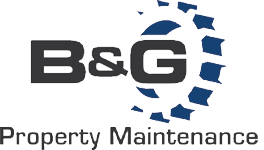Electrical Vehicle Charging At Home
What to know before purchasing your new EV
One of the most important aspects of owning an electric car or plug-in hybrid, might not be how they drive or how far you’ll go on a charge. The most important thing to think about however, is how you’ll actually charge it in the first place. With many potential EV owners excited for a public charging network thereby possibly bringing electric vehicles such as Tesla down in cost, they can be sure they’ll have somewhere to recharge before heading out each day.
Level 1: 120-Volt
There are three main levels of charging. The most basic, level 1, will be the typical 120-volt home system that does not necessarily require any special hardware or professional installation. In essence, your EV can be plugged straight into a normal three-prong, circuit protected wall outlet using a special charging cord. These can be found with a simple internet search or at the Home Depot. Most every home will have access to such an outlet in their garage, and it most likely will not need any special installation. Basically you can hook up your EV and go. Level 1 charging does not offer a particularly fast charge. The typical estimate for a car like the Nissan Leaf is around 8 to 12 hours, which can give you a 100% recharge overnight. Level 1 charging may not be sufficient for more frequent journeys, unless you’re using your EV exclusively as a second car and only going on short trips. If this is the case, a car like the range-extended Chevy Volt will be less compromised by the slower charge times.
Level 2: 240-Volt
If you want a quicker charge–and many potential EV owners probably come under this category–then a level 2 charger will likely fit your needs. An example would be the Blink HQ. Level 2 runs at 240 volts and around 30 amps, cutting the charge time in half as a result. A 4-6 hour charge time becomes suitable for a great many more applications, including commercial as well as personal residential use. For home usage, you’ll have to get a charging system installed by a professional, and the installation will then need to be tested for electrical safety by your local authority. B&G Electrical Contracting will complete the process from permit request, home electrical evaluation, installation and final inspection. Residential level 2 chargers will be wall-mounted inside your garage or car port. This requires a more intensive installation process. Some of the installation costs may be offset by available energy grants from state agencies. These vary state by state.
Level 3: High voltage
The quickest charge available at the moment is through a level 3 fast charger. These will largely be used in locations where a quick charge time is important, such as gas stations, rest stops and malls, and do not necessarily apply to the residential market. A fast charger running on 50 to 500 Volt DC current at over 100 Amperes can provide 80 percent charge in as little as 15-30 minutes. B&G can easily install this system in any shopping mall parking lot, commercial office park or covered lot in an office building.
Which one is right for your application?
Everyone has access to a level 1 charger, but we suspect that it might only be suitable for consumers who drive a few miles every day, maybe to work and back with a few stops in between. Short, infrequent trips won’t be hindered by the long charge times. Most EV buyers are more likely going to upgrade to level 2, which proves a cost-effective compromise. The 4-6 hour charge time is easily quick enough for an overnight charge leaving you with 100% at the start of every day. If your workplace has these installed, you’ll find your battery at 100% by the end of the working day, as well.
B&G Electrical Contracting is excited to offer the installation of these chargers and will provide free estimates on all of your projects!


